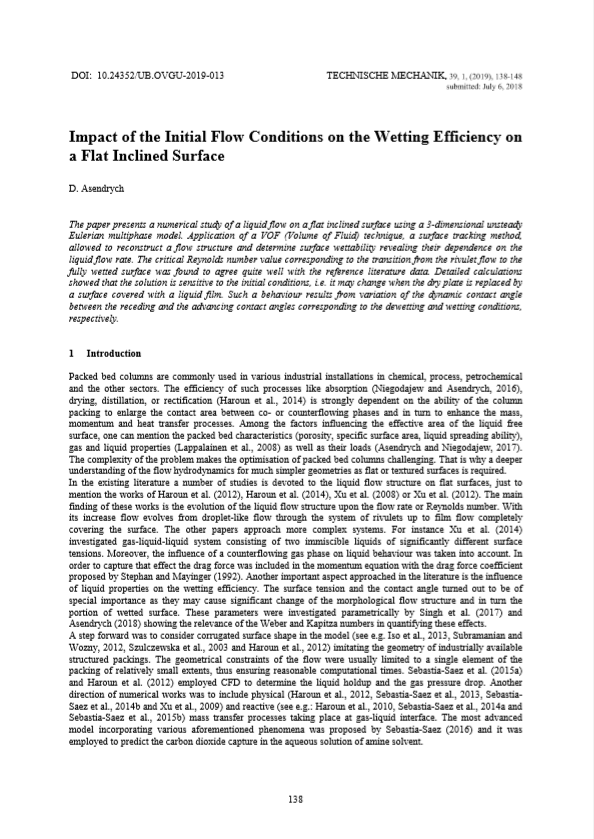Impact of the Initial Flow Conditions on the Wetting Efficiency on a Flat Inclined Surface
DOI:
https://doi.org/10.24352/UB.OVGU-2019-013Abstract
The paper presents a numerical study of a liquid flow on a flat inclined surface using a 3-dimensional unsteady Eulerian multiphase model. Application of a VOF (Volume of Fluid) technique, a surface tracking method, allowed to reconstruct a flow structure and determine surface wettability revealing their dependence on the liquid flow rate. The critical Reynolds number value corresponding to the transition from the rivulet flow to the fully wetted surface was found to agree quite well with the reference literature data. Detailed calculations showed that the solution is sensitive to the initial conditions, i.e. it may change when the dry plate is replaced by a surface covered with a liquid film. Such a behaviour results from variation of the dynamic contact angle between the receding and the advancing contact angles corresponding to the dewetting and wetting conditions, respectively.





